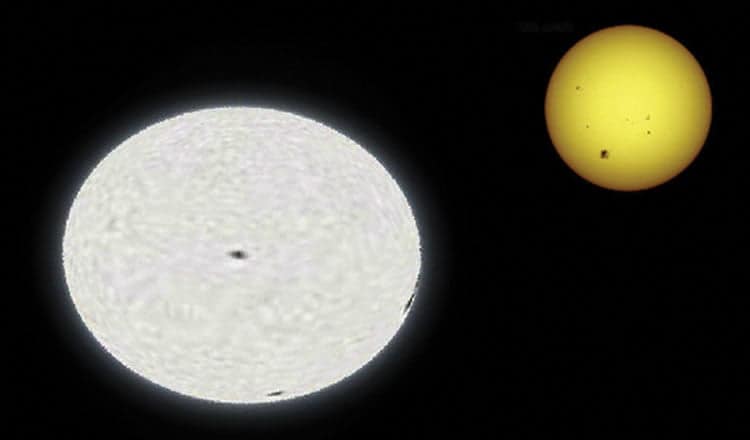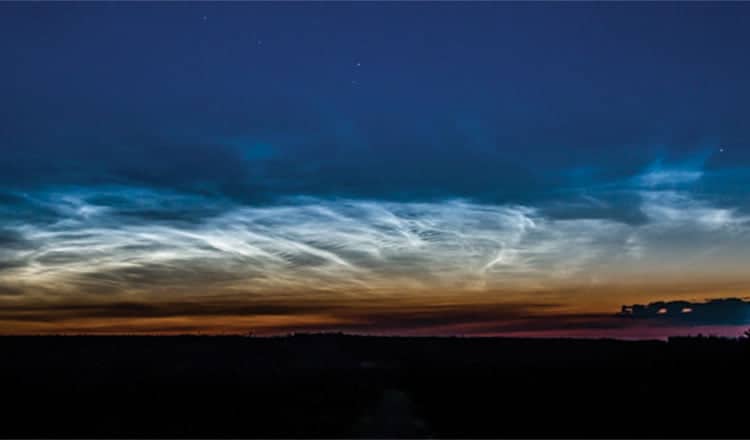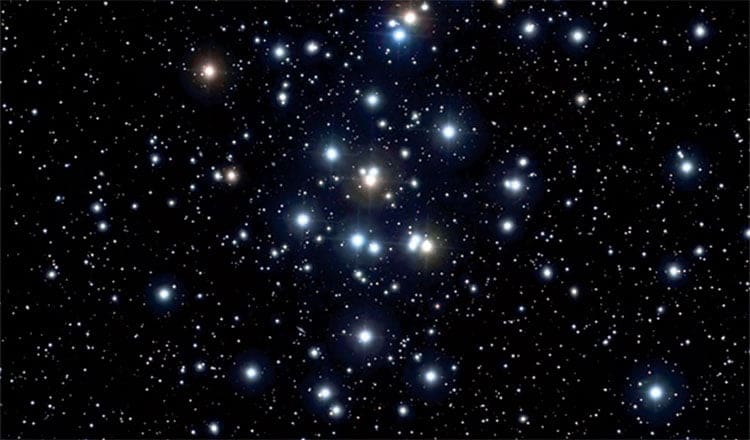October is an amazing month for amateur astronomers. Summer constellations like Cygnus, Lyra, Hercules are slowly sinking into the horizon, and winter constellations like Andromeda, Taurus, and Orion are making their way onto the stage of the Yukon night skies.
So what are the three best objects to observe in those amazing Yukon night skies? They are Jupiter, the largest planet; the Andromeda Galaxy, a galaxy that you can see with the unaided eye; and of course Comet Hartley 2.
Let’s start with Jupiter, located in the southeastern evening sky and easily recognized by its stunning brilliance. It is the first object seen in the evening sky, and by midnight is in a perfect observing position.
Jupiter offers a wealth of detail to observe. First, there are the four orbiting moons, always fascinating to watch as they swing around the mighty planet in an unending orbit.
As many as four colourful cloud belts are always visible. Up to ten belts may be seen, though I have only seen a maximum of eight. These belts and zones make for endless viewing opportunities. With a telescope at medium to high power, you can see colours in Jupiter’s cloud belts, wonderful indeed.
Jupiter’s Southern Equatorial cloud belt is now fading, making it much easier to see the Giant Red Spot. This is oval spot is actually a storm that is larger than our planet earth, and has been raging for as long as anyone can remember.
Even with 10×50 binoculars, the four moons are visible. The cloud bands and zones can be seen with a small refractor or spotting scope, and a four inch refractor or an eight inch reflector can reveal enough detail to keep you at the eyepiece for hours.
Next we have the Andromeda Galaxy. This galaxy is so bright that it was observed centuries before the telescope was invented. I find it amazing that we can see a galaxy 2,200,000 light years distant with the unaided eye. This galaxy is 102,500 light years in diameter.
To locate the Andromeda galaxy, look to the eastern region of the night sky and find the constellation of Cassiopeia, the large “W” shape in the sky. From the right leg of Cassiopeia, move diagonally twenty degrees or about four binocular fields toward the horizon. As you scan around keep an eye out for a small glowing patch of light.
The best way to start viewing Andromeda is with binoculars at a dark observing site. The galaxy is massive. It’s almost four degrees across, which is almost the full field of view in a pair of 10×50 binoculars.
So what can you expect to see? With the unaided eye this galaxy appears as a oval smudge of light, and through binoculars it looks pretty much the same, only larger. In my small refractor the oval shape and the two companion galaxies are now visible at medium power.
It takes my 14-inch reflector to see that the main and largest galaxy, Andromeda, rests at an forty five degree angle, while the other two companion galaxies rest at offset angles. Now the two dark dust lanes that separate the spiral arms can be seen.
The core of the galaxy is fascinating to view, as one realizes that all this light is being produced by masses of stars circling what is thought to be a black hole.
Moving onto Comet Hartley 2 we have the brightest comet of the year. To locate Hartley 2, first find the constellation Cassiopeia in the eastern sky. Also located nearby is the constellations of Perseus, Auriga, and Geminiand this is where Comet Hartley 2 will be found.
The great thing about living in the Yukon is that darkness sets early and Comet Hartley 2 is already in the sky. By around 2 am it can be seen cruising through the constellation of Perseus with the Milky Way for a backdrop, a most impressive sight indeed!
Comet Hartley 2 was closest to earth on October 20th at which time it was within eleven or twelve million miles of Earth, under the bright star Capella, in the constellation Auriga.
So how bright did this comet get? Comet Hartley 2 was barely naked eye visible. At the time of writing this column I can see it in 10×50 binoculars, clearly. My little 76 mm Borg refractor shows a green fuzzy cue tip for an image, with a brighter white nucleus, and no tail.
The nucleus of this comet is six football fields long and would weigh three hundred million tons on earth. The next pass of this comet will be in 2017, so if you miss it this time, you still have another chance.
Clear Skies from James “Deep Sky” Cackette.
James “Deep Sky” Cackette can be reached at [email protected]. See his photo adventures on Facebook at Yukon Night Skies.




